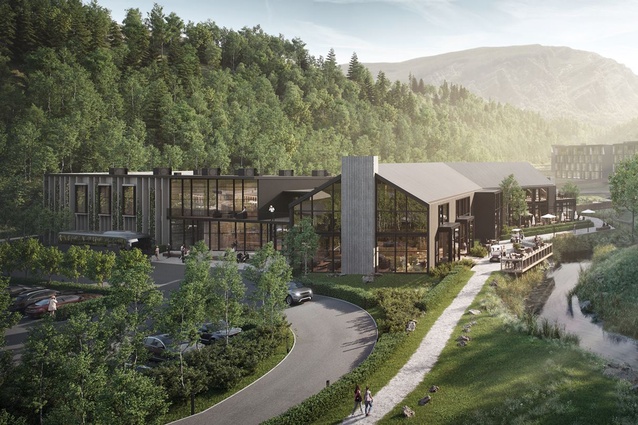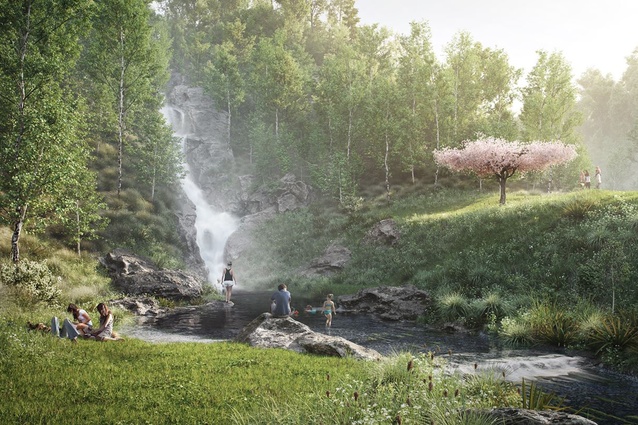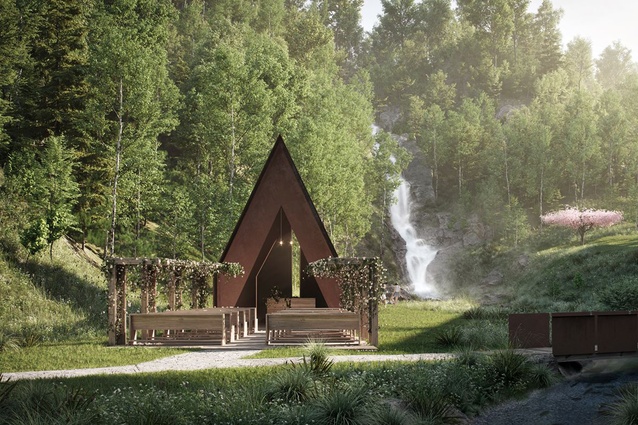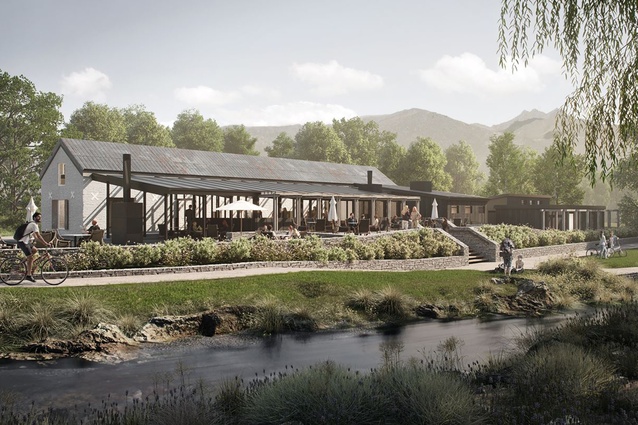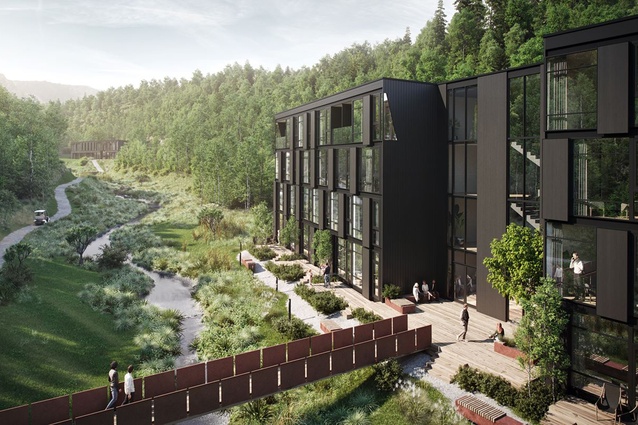Hidden retreat in the Wakatipu Basin
Landscape Architecture Aotearoa talk to Hannah Ayres, the landscape designer behind an exciting and complex project in the Wakatipu Basin. The project involves not only a elegant hotel but the rehabilitation of the natural landscape of the region.
A master plan has been prepared for a new luxury hotel and wellness retreat in the Wakatipu Basin. Waterfall Park is a 58-hectare block of Resort zone land, encompassing a secluded, steep-sided valley between Arrowtown and Lake Hayes. The development includes a “four-plus star” hotel within the valley, with a selection of restaurants, event spaces, a chapel, day spa and wellness retreat. It involves a substantial revegetation and riparian planting project, as well as restoration and repurposing of Ayrburn’s historic farm buildings.
The discreet valley is located just below (and to the south of) Millbrook Country Club, where Mill Creek spills over the head of the valley as a picturesque waterfall, on its way to Lake Hayes. “You can’t see the valley from the road and it’s been privately owned since the late 1800s, so very few people know the waterfall even exists,” says project landscape architect Hannah Ayres from Rough and Milne.
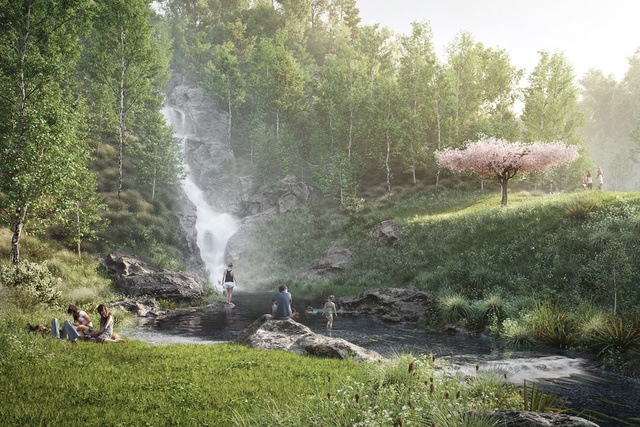
“As a landscape architect it’s very exciting,” Ayres says. “This is a place that is rich with historic charm and natural beauty. It’s wonderful to work with a client that acknowledges the importance of landscape on a site like this. They are willing to invest in rehabilitation of the natural environment and historic features, and develop the site in a way that allows the public to experience it.”
As an underlying theme to the master plan, the landscape character will subtly morph from a cultural landscape associated with the historic Ayrburn Farm on Speargrass Flat, into an indigenous environment quite unlike anywhere else in the Wakatipu Basin. Both landscape and architecture will reflect this underlying narrative.
“We wanted the hotel to be distinct from other visitor accommodation in the district.” Ayres explains. “When you are standing inside the valley you can catch glimpses of the mountains surrounding the Wakatipu Basin, but you feel like you are completely isolated from the surrounding landscape. I saw this as an opportunity to be distinct from the character of the typical Arrowtown countryside, which is typically celebrated for its cultural history, resulting in an overlay of pastoral and Arcadian character. This is a place that feels even older than that, a place that could be re-created and one day perceived as a hidden remnant of an indigenous forest environment.”
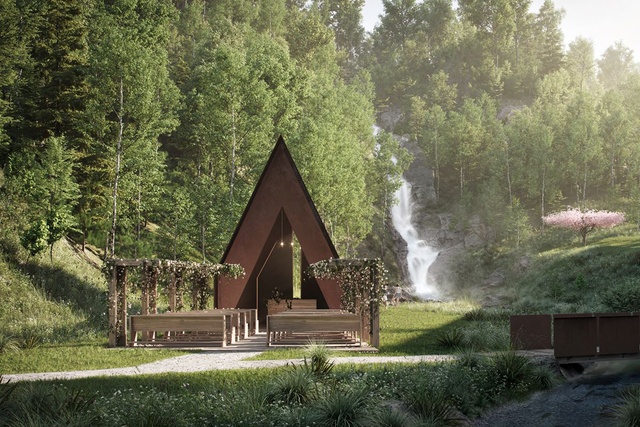
But the very things which make Waterfall Park unique also make it a challenging site to work with. Throughout the master planning process, the team of more than 20 consultants has had to address many challenges. The design team has worked closely with the engineers to deal with geotechnical and hydrological challenges.
Ecologists have been involved to advise on appropriate revegetation and protection of the Mill Creek aquatic environment during and after construction, which is an important spawning ground for trout and kōaro - one of New Zealand’s native galaxiids. The team has also worked alongside heritage experts to protect and enhance the existing heritage features of the site.
“I think it’s the complexity of constraints and opportunities of a site like this add layers of richness to the master plan. In a way it’s easier to design, because the site tells you what to do. Design solutions, plant and material selections just feel like common sense, like fitting together an enormous jigsaw puzzle,” Ayres says.
The extensive revegetation project is already underway on the valley walls. Around 3500 trees including native mountain beech (Fuscospora cliffortioides) have already been planted. “There’s not much you can do with the steep valley walls except plant them.” Ayres says. The site used to be covered in a thick forest of pine, sycamore and willow trees which were all considered wilding species in the Otago region.
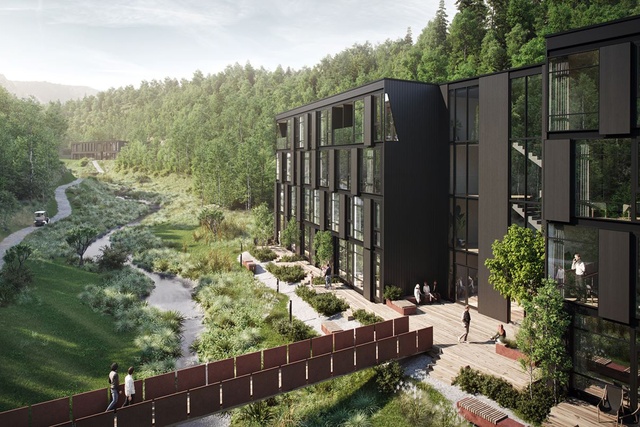
The exotic vegetation was cleared in recent years to make way for the re-establishment of a predominantly native environment. “The valley has its own microclimate which has influenced our plant selection,” Ayres explains. “We have to establish a nurse crop first before we can bring in a wider diversity of species.” Ongoing weed and rabbit management will also be critical to the success of the revegetation project.
A resource consent application has been recently lodged with the Queenstown Lakes District Council. Although the proposed activities are consistent with the Resort zone purpose, Ayres expects the resource consent process could take up to a year given the size and complexity of the application.
“An extremely high level of detail went in to the resource consent application due to the complexities of building a hotel in such a unique environment,” she says. “Our master plan had to deviate from the Council’s structure plan for the Waterfall Park Zone, as opportunities and constraints became apparent the more we came to understand the site”.
Learn more about the proposed development and view further illustrations here.
This article first appeared on the Landscape Architecture Aotearoa website, which is published by the New Zealand Institute of Landscape Architects (NZILA).

